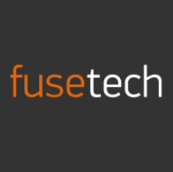Ransomware attacks are on the rise and can cause significant damage to businesses. Contact centers, in particular, are at high risk of being targeted by these attacks, as they often handle sensitive customer data. In this blog post, we will discuss how to protect against ransomware in contact centers and introduce the 3-2-1-1 data storage strategy as an effective way to safeguard your data.

What is ransomware?
Ransomware is a type of malware that encrypts files on a victim's computer, rendering them inaccessible. The attackers then demand a ransom in exchange for the decryption key needed to restore the files. Ransomware attacks can be devastating for businesses, causing significant financial loss and reputational damage.
How to protect against ransomware in contact centers?
- Train your staff. The first line of defense against ransomware attacks is your staff. Train them to recognize phishing emails and other suspicious messages. Ensure that they are aware of the consequences of clicking on suspicious links or downloading attachments from unknown sources.
- Implement security policies. Restrict access to sensitive data and limit the use of external devices on the network. Ensure that all software is up-to-date and that firewalls and antivirus software are installed and functioning correctly.
- Backup regularly. Regular backups are essential to ensure that your data can be restored in the event of a ransomware attack. Ensure that your backups are stored securely, and test them regularly to ensure that they can be restored quickly and accurately.
The 3-2-1-1 data storage strategy
The 3-2-1-1 data storage strategy is an effective way to protect against ransomware attacks. This strategy involves:
- Three copies of your data: Keep at least three copies of your data, stored on separate devices. This ensures that if one device is compromised, you still have two additional copies.
- Two different storage mediums: Store your data on two different types of storage devices, such as a hard drive and a cloud-based service. This provides an extra layer of protection in the event that one storage medium is compromised.
- One backup offsite: Store at least one backup of your data offsite, in a secure location. This ensures that your data is safe in the event of a physical disaster, such as a fire or flood.
- One copy offline: Keep at least one copy of your data offline, such as on a disconnected hard drive. This ensures that your data is safe from online threats, such as ransomware attacks.
Conclusion
Ransomware attacks are a growing threat to businesses, and contact centers are particularly vulnerable. By training your staff, implementing security policies, and using the 3-2-1-1 data storage strategy, you can protect your data and minimize the risk of a successful ransomware attack. Remember, prevention is always better than cure, so take the necessary steps to safeguard your business against these malicious attacks. With CARIN, both the mentioned preventative steps and the 3-2-1-1 strategy are feasible so that your contact center data can be secured to the fullest.








